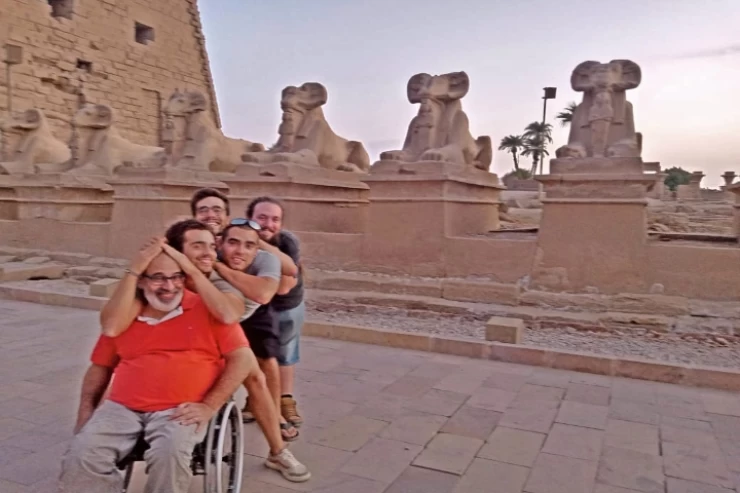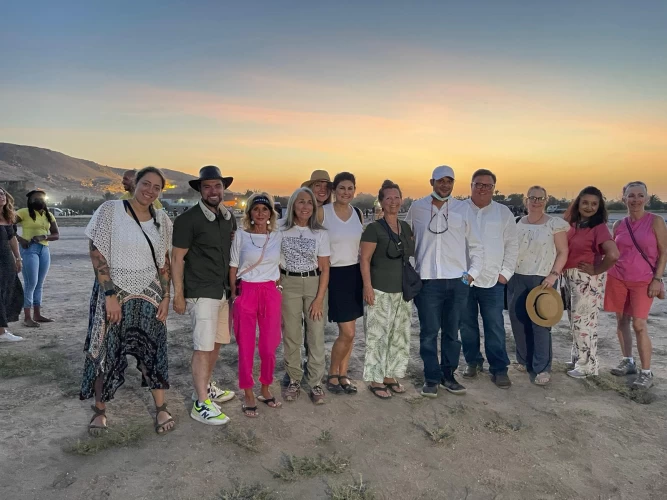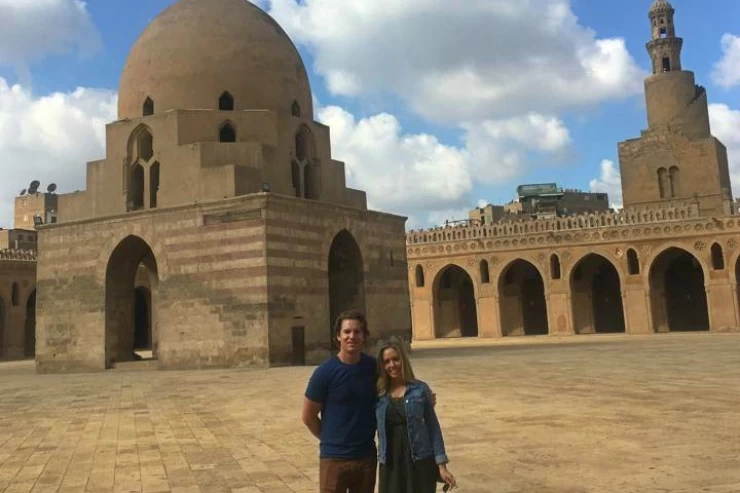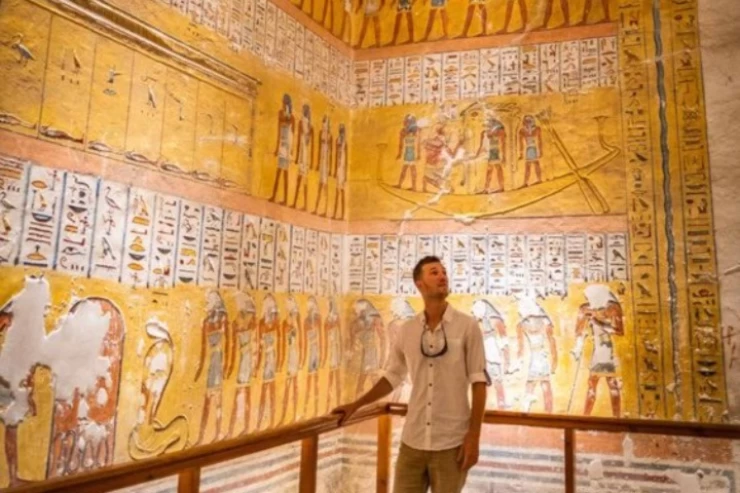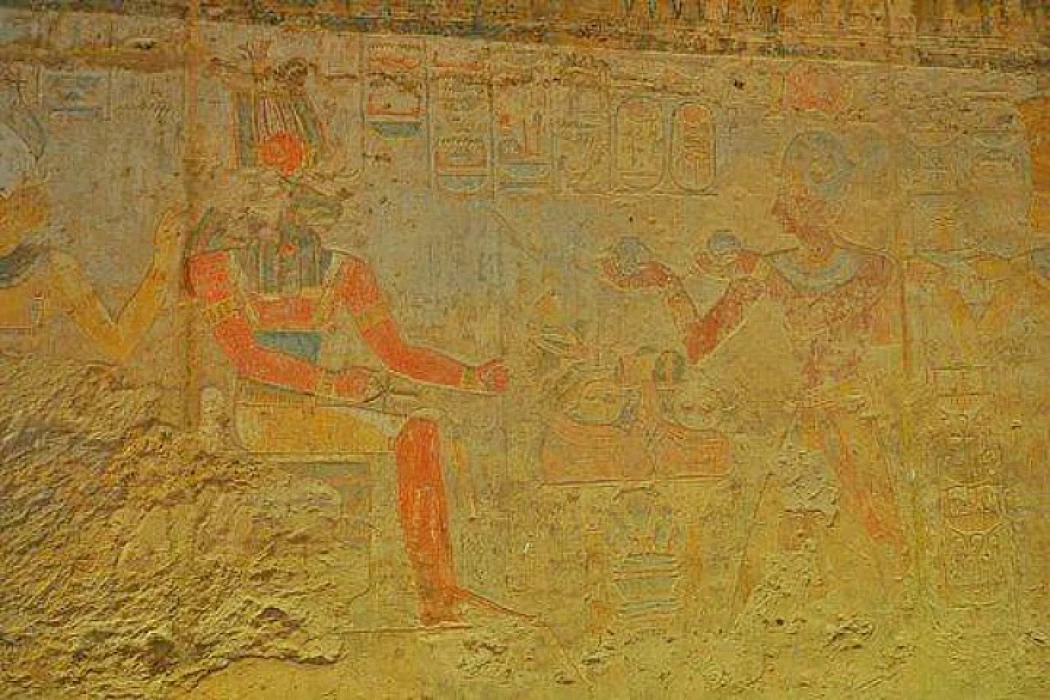
Temple of Beit El Wali | Ramses II Temple in Old Nubia
Temple of Beit El Wali: A Jewel of Ramses II's Legacy in Old Nubia
Amongst the silent environments of Old Nubia, one finds Beit El Wali—the site of an amazing architectural and artistic prowess attested to by Pharaoh Ramses II. Indeed, the site carved into a sandstone cliff has now become an impressive monument to the might and fidelity of one of the world's greatest rulers, Egypt's own.
Peeping into History
It was shortly before the 13th century BCE that the temple was established. It was probably one of the earliest shrines of Ramses II in Nubia, the region with both a glorious past and a bright future for Egypt in matters of trade and strategic expansion. "Beit el-Wali," or the house of the holy man, referred to a holiness in which the ancients held the site.
Temple of Beit El Wali—A Jewel of the Legacy of Ramses II: Old Nubia
Among the quiet environments of Old Nubia rises Beit El Wali, an extraordinary monument to architectural prowess and artistry testified to by Pharaoh Ramses II. That antiquity was cut deep into a sandstone cliff, like a timeless testament to the strength and devotion of one of the most illustrious rulers in Egypt.
Some Glimpses Into The Past
In the thirteenth century B.C.E., therefore, the Temple of Beit El Wali was among the very first temples built by Ramses II in Nubia—an important area for Egypt regarding trade and strategic extension. "Beit El Wali," which translates to "House of the Holy Man," commemorates the sacredness this place had before the ancient Egyptians. The temple was meant to testify to Ramses's efforts to reveal his divine kingship, glorifying his nation's gods.
Architectural Grandeur
This temple, cut from rock, displays a level of art and engineering capable of awe. It is small compared to other temples, but it is packed with historical and cultural significance. It is made up of a forecourt, a hall transversely, and a sanctuary, and there are carvings all around them that narrate the military victories of Ramses II, especially over the Nubians and others.
The wall of the temple is a visual history of Pharaoh's campaigns, showing the scenes of war and peace and paying tribute to him. The detail in the carvings tries to recreate the might of Ramses II as a warrior and as a statesman, protector, and glorifier of the united Egypt.
Religious Significance
The Temple of Beit El Wali, which is dedicated to Amun-Ra, Ra-Horakhty, Khnum, Anuket, and Satis, is a temple constructed for the pantheon of gods. Each of these deities exercised ultimate influence over Nubia in terms of fertility, protection, and divine authority over the region. In such a way, the sanctuary features Ramses II making offerings to those gods, emphasizing his piety and link to the divine.
The Vibrant Reliefs
This temple is defined by its highly preserved reliefs, many with remnants of bright colors. The scenes depict Ramses II at his most ostentatious, smiting his enemies while being blessed by deities. One especially telling image shows the pharaoh receiving tributes from inundated Nubians, representative of the temple as becoming and being the very metaphor of Egyptian encroachment in the area.
Preservation and Transfer
During the construction of the Aswan High Dam in the 1960s, the temple was on the verge of being submerged when its waters rose in Lake Nasser. The temple was completely dismantled and moved to the New Kalabsha area, along with other Nubian monuments, in an impressive effort to preserve this remnant of history. Visitors today can enjoy this beauty and greatness because of that initiative.
How to visit the Temple of Beit El Wali?
Historical Wealth: Discover the legacy of Ramses II and learn about how ancient Egypt had to pretend to have influence in Nubia.
Architectural Wonder: Observe the doing of a temple sculpted directly from the rock.
Cultural Ties: Know the Egyptian and Nubian cultures through their religious and artistic expression.
Quiet Locale: Enjoy a serene setting in which the New Kalabsha area is located, now under which the temple has been built.
With the assistance of the Swiss Institute and in collaboration with Polish archaeologists, the Beit el-Wali Temple is a Nubian rock-cut temple that dates back to ancient Egypt. It was the first of several temples that Pharaoh Ramses II erected in this area. It was constructed in honor of the gods Amun-Ra, Ra-Horajtis, Khnum, and Anuket.
Its name, Beit el-Wali, which means "House of the Holy Man," may allude to its former use by a Christian hermit at some point in the past, and it was moved next to the Kalabsha Temple, south of the High Dam.
Clear inscriptions from the Nubian temples Ramses II built during the New Kingdom period in Egypt have survived to the present, but regrettably, significant inscriptions that were located close to the middle of the south wall of the inscription that Ramses II drew as he prepared to gather the members of his army to wage war against the Nubians have been removed.
Ramses II, who ruled for nearly seven decades and lived to be 91 years old, presided throughout significant political and cultural change that will always be remembered in Egypt. Ramses II underwent a mummification ritual before being buried in the Valley of the Kings. The ancient Egyptian religion held that the deceased sovereign would be accompanied in the afterlife by the priceless sarcophagi and funerary objects found in the tomb.
The Temple of Beit el-Wali is one of the most visited destinations in Aswan, so visit this amazing place and immerse yourself in the archaeological beauty of antiquity.
Within this temple, a significant portion of its original color still exists, but the historical scenes on its front lawn have lost their paint. Amidst the central section of the temple's south wall, a relief depiction of Ramesses II charges into battle against the Nubians, accompanied by his two young sons, Amun-her-herself and Khaemwaset. Next, in the scene of relief.
The majority of Lake Nasser cruise tours that leave from Aswan to the lake include a stop at the Beit el Wali Temple because it is close to the Kalabsha Temple. The Kalabsha Temple and the Kirtassi Kiosks are two additional archaeological sites from antiquity that are close to Beit el-Wali Temple. These were set up in Egypt during the Roman era. These locations are frequently visited together as part of a distinctive 5-star luxury cruise on Lake Nasser or by renting a boat from Aswan to explore these incredible formations as part of Egypt day tours.
The Temple of Beit el-Wali is one of the most visited destinations in Aswan, so visit this amazing place and immerse yourself in the archaeological beauty of antiquity.







